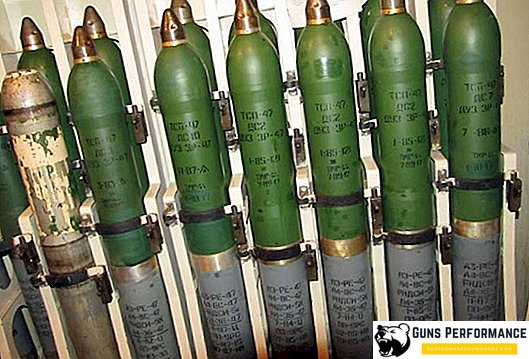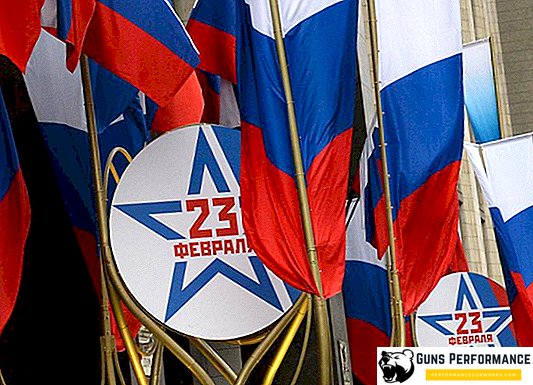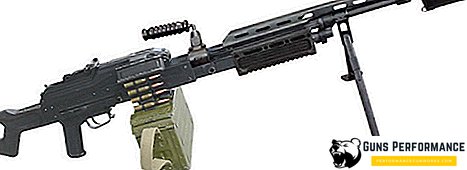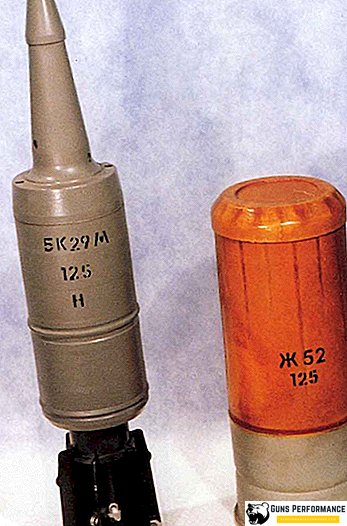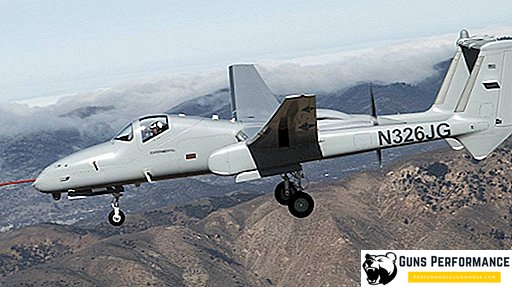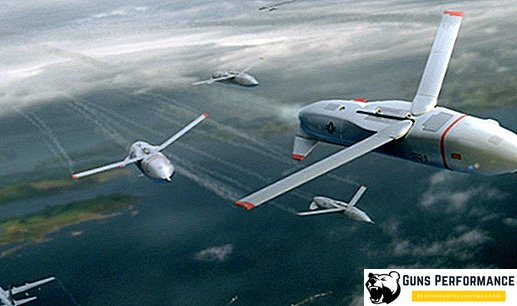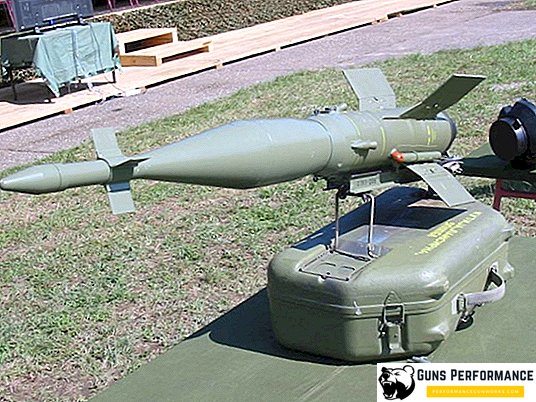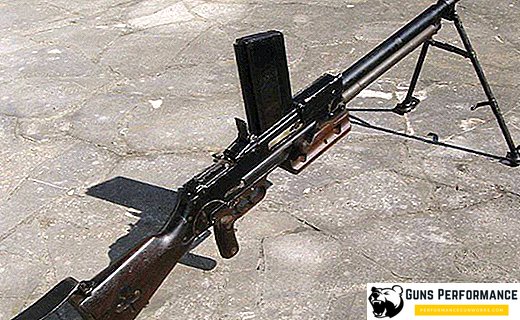
In the history of firearms there are a lot of samples that are undeservedly forgotten and which few people know. A vivid example of this is the French machine gun from the company of Hotchkiss, a weapon that has been undeservedly forgotten. This machine gun does not have such a glorious history as the legendary Maxim machine gun or Kalashnikov assault rifle, but it occupies a significant place in the history of wars and armed conflicts. That only costs the number of countries in the armies of which this machine gun was used, there are more than 25. Do not forget that this machine gun went through two world wars and even became a participant of the revolution (Mexican revolution).
The history of the appearance of the machine gun Gochix
Despite the fact that the basis of the machine gun is the scheme invented by the Austrian officer Alfred Odkolek, the weapon has a French registration. In addition, the Americans also had a hand in the appearance of this weapon. The French company "Hotchkiss and K0", the first to establish a serial production of this machine gun was founded by the American Benjamin Gochiss.
The first modification of the machine gun, designated Mle 1897, was released at the end of the XIX century. The machine gun was developed for rifle cartridge R Lebel caliber 8x50 mm, which was at that time the main ammunition of the French army.

Initially, ammunition was in a rigid tape made of brass. Such a principle of the submission of ammunition in the army was considered unsuccessful. The brass cartridges from the machine gun weighed quite a lot, so there was no need to talk about the mobility of the machine gun design in the infantry units. Instead of equipping cavalry and infantry, new machine guns were equipped with fortifications on the Franco-German border.
The difficulties with the loading system was added and problems with the cooling of the barrel. The existing cooling system, which was installed on the machine gun, was clearly not enough to cool the barrels, especially at high rates of firing. However, the company's engineers quickly looked around and equipped the following machine gun models with a new cooling system, which later became the proprietary feature of these machine guns. Next to the receiver on the barrel five rings were put on, either steel or brass, thereby increasing the cooled surface of the barrel.
Later, brass cartridges for the supply of ammunition began to be replaced with cloth ribbons, which were widely distributed on all serial samples of this type of automatic weapon. However, the supply of ammunition continued to remain imperfect, which was clearly manifested during the fighting.

Already in 1900, the machine gun received a steel radiator and a tripod, which was equipped with guidance tools, in the horizontal and vertical plane. In addition to all the new models that received the designation Mle 1900, already had a device regulating the rate of fire. In the new modifications, the designers tried to apply the combat experience of using machine guns in the Anglo-Boer War, equipping the weapon with new mechanisms and devices. However, innovations made in the design of the machine gun, did not make it more sophisticated and popular among the troops. The lack of orders from the high command of the French army forced the company "Hotchiss and K0" to seek buyers abroad.
In the arms market, the company in 1909 put out at once two modifications of the machine gun in a portable version - a manual, with a mass of 7 and 10 kg., Hotchkiss machine gun. New samples had the same established scheme, which was tested on machine guns. New modifications immediately attracted the attention of specialists and military around the world. Baptism of fire new modifications received during the Mexican Revolution. The machine gun did not shine on the battlefield, but together with the machine guns, "Maxim" could provide the infantry and cavalry units with effective defense. The Americans were the first to orient themselves in the situation and hurried to buy a large batch of machine guns to equip their army. Behind the Americans, the British bought a new machine gun. From that moment on, the machine gun was firmly established in the armament structure of almost all infantry units in the European armies. Hotchkisa machine gun began to be produced in Japan and in Latin America.
Hot history of Hotchkiss machine gun
The massive use of machine guns in the new system during the Mexican Revolution attracted the attention of the Russian command to these weapons. The machine gun bought by GAU in a single copy was entered for testing in Russia. The new machine gun of the Mle 1909 modification appeared on the rifle range in 1911, however, according to the decision of the specialists of the Main Artillery Directorate, the weapon did not meet its goals and objectives according to its performance characteristics. In the process of testing, the military box was particularly displeased with the design of the receiver. This test is not over. The interest of the military was fueled by the fact that Hotchkiss’s machine guns entered service with the armies of Japan and the United States, and were armed with many European armies.
While military tests of the machine gun were in the Russian army, the French designers released a new aircraft version of the machine gun. In contrast to the light machine gun, the pistol grip, a special sector sight and a swivel for rotating the machine gun in three planes stood on the new modification. The beginning of the mass production of the Maxim machine gun in Russia put an end to the attempts to put the French machine gun on to equip the infantry units of the tsarist army.

With the beginning of the First World War, a truly combat history of the Hotchkiss machine gun began. All modifications of the machine gun, which were released before that time, were removed from the warehouses and began to arrive at the equipment of combat units. Together with the Maxim machine gun and the German MG 08 in 1914, Hotchkiss machine guns became the main automatic weapon on the battlefield.
It is worth noting that in each army machine guns were used for their ammunition. In France, all samples of Mle 1909 were adapted for the French rifle cartridge R Label. In England, all machine guns received the designation Mk I "Hotchkiss" and were produced under the British cartridge caliber 0,303. Since 1915, the British began mass production of machine guns at the Enfield weapons factories. Licenses to issue weapons began to buy other countries that did not participate in a military conflict. Modifications of wartime were equipped with bipod and trunnion, specially designed for installation on a tripod.

Even the massive use of Hotchkiss machine guns during the battles of the First World War did not earn him fame and recognition from the infantry. However, the weapon continued to be the main machine gun of the battlefield in the French army. Beginning in 1915, weapons began to arrive at the equipment of aviation units and armored units. The heavy construction of the machine gun and the particularly complex ammunition supply system proved to be the only one suitable for firing from a stationary position. Mass production of machine guns of this system began to decline only when light machine guns of other systems began to be supplied to the armament of the warring armies. After the end of the First World War, it turned out that Hotchkiss's machine gun in various modifications was in service with the armies of 20 countries.
Quite a large part of these machine guns of various modifications turned out to be in Russia, where they had to have their say already during the Civil War. In France and in some other countries, the machine gun Hochkiss modified Mle 1909 and Mle 1914 remained in service until the beginning of the Second World War.
The main features of the design of the machine gun Gochix
The main design feature of the machine gun of all modifications is the air cooling system. Unlike the Maxim machine gun, where the water cooling casing was installed, the French machine gun was originally oriented to air cooling. In those years, when the first models of automatic weapons began to appear, the designers had not yet fully realized the importance of timely cooling of the barrels. Already during operation, it became clear that in the normal version the barrel could not normally and quickly cool. It was necessary to increase the useful area of the trunk.

In some cases, the solution was found fairly simple. For example, on Lewis machine guns ribbed barrel was equipped with a massive casing, which created active air cooling. On the Hotchkiss machine gun, initially there was neither one nor the other. Passive cooling did not give the desired effect. Only since 1900, the weapon began to be equipped with additional rings, performing the function of a radiator trunk.
Automatic machine guns consisted of a vapor mechanism with a long piston stroke. A regulator was installed in the gas chamber, with which it was possible to change the volume of the gas chamber. The length of the course of automation was 106 mm. Automatics and mechanics of the French machine gun at one time was considered the most advanced, but a number of unexplored technical units brought all the advantages of the weapon to a minimum.
Unlike its competitors, the Hotchkiss machine gun could conduct both single and automatic fire. Ammunition of machine guns of the main modifications, as a rule, consisted of 30 English cartridges of the caliber of 0.303 or 24 cartridges of R Lebel.

The machine gun after the end of the First World War continued to remain in service with the French army. In 1925, some changes were made to the design, which affected mainly the method of installation and the method of aiming. New modification received the designation Mle 1914/25. The machine gun appeared lightweight tripod, shoulder rest and optical sight Krauss. As before, the weapon had rather large dimensions, but for the French army this factor was not of key importance. The French command, taught by the bitter experience of the battles of the First World War, built its entire defense strategy on positional combat.
Conclusion
Machine gun Hotchkiss did not have such fame among the soldiers as his colleague, machine gun "Maxim". However, the combat experience, scope and geography of military conflicts in which the machine gun had to take part deserve respect. The machine gun was able to stand on arms for almost half a century. Even the outbreak of the Second World War in the first months showed that the old machine gun had not yet lost its combat significance. The German army, which seized as a result of the defeat of France in 1940, all its arms reserves, for a long time used Hotchkis machine guns on all fronts.
The machine gun, although not popular in the rifle troops, was the main rifle armament in the tank forces. No less successful is the combat use of the machine gun in aviation and in the navy, being the main weapon of patrol boats and patrol boats.


